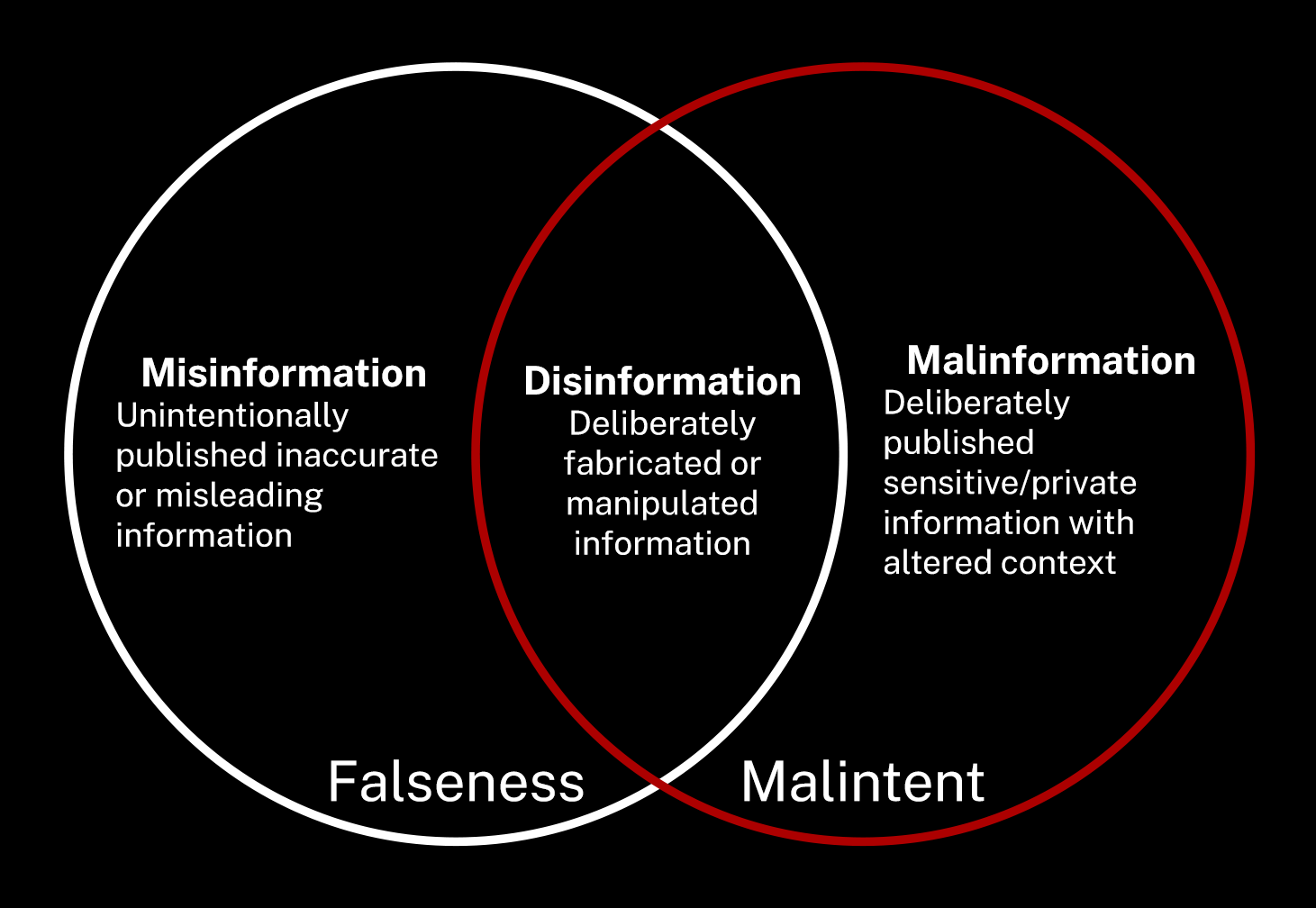
Misinformation: unintentional mistakes such as inaccurate photo captions, dates, statistics, translations, or when satire is taken seriously. This type of "wrong" information is accidental and is not intended to harm.
Disinformation: fabricated or deliberately manipulated audio/visual content. Intentionally created conspiracy theories or rumours. This type of "wrong" information is deliberately shared to harm or deceive a person.
Malinformation: Deliberate publication of private information for personal or corporate rather than public interest, such as revenge porn. Deliberate change of context, date or time of genuine content.
LinkedIn Facebook Instagram